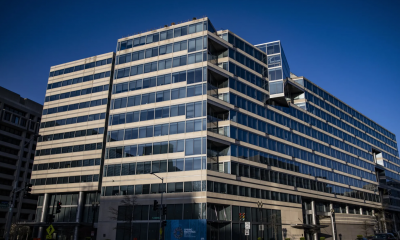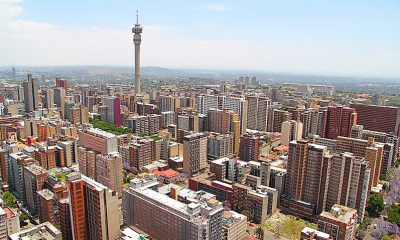Business
South Africa’s Economy Beats the Odds with Surprise GDP Growth

A better-than-expected result
South Africa’s economy pulled off a small but significant surprise in the second quarter of 2025. Stats SA reported a quarter-on-quarter GDP increase of 0.8%, stronger than the 0.5% economists had forecast. On an annual basis, growth came in at 0.6%, with the first half of the year showing a 0.7% rise compared with the same period in 2024.
The rand responded positively, strengthening after the release of the data, having softened earlier in the day while markets held their breath.
What drove the growth?
Manufacturing proved to be one of the strongest performers, expanding by 1.8% and contributing 0.2 percentage points to GDP. Within the sector, petroleum and chemical products, rubber, plastics, and motor vehicles all played standout roles.
Trade, catering, and accommodation also impressed, growing 1.7%. Analysts noted that retail, motor trade, accommodation, and food and beverage services picked up steam.
Mining recorded a 3.7% increase, supported by platinum group metals, gold, and chromium ore. Together, these industries offset weaker performances in transport, which slipped 0.8%, and construction, which fell 0.3%.
The consumer effect
Household spending also provided a lift, climbing 0.8%. South Africans spent more on durable goods, semi-durable goods, and services. Government expenditure rose as well, up 0.7%, reflecting increased purchases of goods and services and higher employee compensation.
Net exports, however, were a drag. Exports dropped 3.2%, largely due to weaker trade in base metals, vegetable products, and certain vehicles, while imports fell 2.1%.
Economists weigh in
Economists had expected growth, but not quite to this extent. Nedbank had predicted a 0.6% increase, pointing to rebounds in mining and manufacturing. Their call proved correct, though even their bullish estimate undershot the final outcome.
Despite the encouraging numbers, many warn that the broader story remains sobering. Growth is still too sluggish to make a real dent in unemployment or to keep up with population increases. Structural issues, such as clogged ports and unreliable freight rail, continue to choke potential.
The bigger picture: tariffs and headwinds
The Q2 data covers April to June 2025, which means it does not yet capture the impact of the steep US tariffs that took effect on 7 August. Washington slapped a 30% levy on South African exports, one of the harshest rates imposed on any partner country.
Early signs suggest the tariffs will squeeze the auto sector and manufacturing in particular. Economists expect the true damage to show in Q3 and Q4. Nedbank remains cautiously optimistic, predicting 0.3% growth in Q3 and 0.5% in Q4, for a full-year rise of 1%. Others are less upbeat, forecasting that the tariffs could shave 0.2 to 0.3 percentage points off, bringing total growth closer to 0.7%.
What it means for ordinary South Africans
For Joburgers and South Africans alike, the numbers paint a mixed picture. Yes, the economy is showing resilience, with industries like mining and manufacturing proving their mettle. But the reality on the ground is that modest growth is not enough to ease joblessness or rising living costs.
As the Government of National Unity works on reforms, the test will be whether small victories like this quarter’s result can build into something more lasting. For now, the surprise growth offers a rare dose of optimism in a year clouded by trade battles and long-standing domestic hurdles.
Also read: South Africa Keeps US Seafood Market with Sustainable Fishing
Follow Joburg ETC on Facebook, Twitter, TikT
For more News in Johannesburg, visit joburgetc.com
Source: Business Tech
Featured Image: Business Tech



















